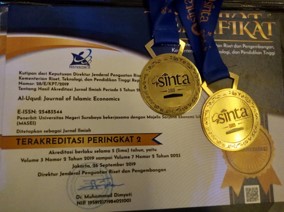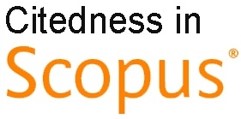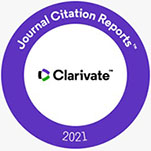Revisiting zakat distribution in the modern era: Toward a reconstructed model
DOI:
https://doi.org/10.26740/al-uqud.v9n1.p47-59Keywords:
Distribution, Zakat, ContemporaryAbstract
The distribution of charity to mustahik (zakat recipients) initially followed a personal and traditional consumer-based model, typically through the direct provision of daily necessities in the form of wealth donations. Most scholars emphasize the requirement of tamlik (transfer of ownership) when distributing zakat. In the contemporary era, BAZ (Badan Amil Zakat) and LAZ (Lembaga Amil Zakat) evolved their distribution methods through programs that include not only the transfer of wealth but also non-material forms, such as education, healthcare, empowerment, and social or da'wah initiatives. This study employs a qualitative case study approach, aiming to examine the reconstruction of charity distribution comprehensively and deeply from the perspective of contemporary Islamic law and social change. The research findings indicate a shift in distribution patterns from traditional consumer models to more creative and productive models. These are implemented through various programs, including scholarship schemes, health services, and economic empowerment initiatives. Additionally, the scope of Sabilillah beneficiaries has expanded to include incentives for TPQ (Qur'anic education) teachers, Qur'an memorizers, and training for future preachers. These transformations reflect an effort to adapt zakat distribution to current societal needs through a process of accommodation.
References
Ali, A. F. (2022). Teori Perubahan Sosial Dalam Memahami Hadis Kepemimpinan Perempuan. DIRAYAH : Jurnal Ilmu Hadis, 3(1).
Almashuri, I., & Subandi, B. (2021). Pendistribusian Dana Zakat pada Program Beasiswa Satu Keluarga Satu Sarjana di Badan Amil Zakat Nasional Jawa Timur. Journal of Islamic Management, 1(1), 30–42.
Candrakusuma, M., & Wahrudin, B. (2024). Menelusuri hikmah pengelolaan zakat dalam sejarah islam. Jurnal Masharif Al-Syariah: Jurnal Ekonomi Dan Perbankan Syariah, 9(204), 2477–2493.
Ezril. (2019). Manajemen Zakat dari Era dan Negara yang berbeda. Al-Mutharahah: Jurnal Penelitian Dan Kajian Sosial Keagamaan, 11(1), 1–14.
Faisal, F. (2017). Sejarah Pengelolaan Zakat Di Dunia Muslim Dan Indonesia (Pendekatan Teori Investigasi-Sejarah Charles Peirce dan Defisit Kebenaran Lieven Boeve). Analisis: Jurnal Studi Keislaman, 11(2), 241–272.
Fauzan, Hikmah, F., Hasanah, U., & Zuhroh, F. (2023). Model pendistribusian dana zakat infak sedekah (zis) dalam pemberdayaan masyarakat di balai kreatif lazda rizki jember. Moderasi : Journal of Islamic Studies, 3(1), 1–14.
Hakim, B. R. (2015). Paradigma baru pengelolaan zakat perspektif hukum islam kontemporer. Jurnal Diskursus Islam, 3(3), 1–18.
Hakim, L. (2020). Strategi Pengembangan Bakat melalui Kompetisi Eksternal. Jurnal Manajemen Pendidikan Islam, 11(1), 55–70.
Halim, F. (2015). Hukum dan perubahan sosial. Al Daulah : Jurnal Hukum Pidana Dan Ketatanegaraan, 4(1), 107–115.
Hamid, A. (2015). Aplikasi Teori Mashlahah (Maslahat) Najm Al-Dîn Al-Thûfî Dalam Penyelesaian Sengketa Perjanjian Bisnis Di Bank Syariah. AL-‘ADALAH, 12(4), 729–742.
Hamidah, & Romli, S. (2019). Pendistribusian Zakat Berbasis Ekonomi pada Dompet Dhuafa Provinsi Riau. Idarotuna, 1(2), 69–81.
Lutfi, M. (2021). Model pendistribusian zakat: studi terhadap Baznas DKI jakarta dan LAZ Dompet Dhuafa. In Repository.Uinjkt.Ac.Id. Universitas Islam Negeri Syarif Hidayatullah.
Masduki. (2011). Pelaksanaan Zakat Dalam Perspektif Sejarah. In Tsaqofah (Vol. 9, Issue 2, pp. 169–190).
Nurul Hidayat. (2023). Program Dakwah. Amil Zakat Nurul Hidayat. https://nurulhayat.org/dakwah/
Qaradhawi, Y. (2011). Mujibat Taghayyur al-Fatwa fi ‘Ashrina (Faktor-Faktor Pengubah Fatwa. Pustaka Al-Kautsar.
Rajab, K., & Efrinaldi. (2009). Rekonstruksi teori maslahah dalam kajian pembaharuan perundangan Islam: analisis terhadap pemikiran Najm al-Din al-Tufi. Jurnal Syariah, 17(3), 593–606.
Soekanto, S. (2014). Faktor-Faktor Yang Mempengaruhi Penegakan Hukum. Raja Grafindo Persada.
Undang-Undang Republik Indonesia Nomor 23 Tahun 2011 Tentang Pengelolaan Zakat (2011).
Downloads
Published
How to Cite
Issue
Section
License

This work is licensed under a Creative Commons Attribution 4.0 International License.
CC BY 4.0 Abstract views: 487
,
Abstract views: 487
, PDF Downloads: 632
PDF Downloads: 632








